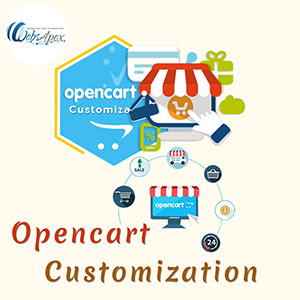How to Break the Cycle of Addiction GBAC


Whenever something unpleasant occurs, this person automatically starts to look for a high. The moment someone uses drugs or alcohol is only one small part of the whole addiction process. Addiction involves multiple distinct emotional states and they come and go in a cycle.
Rebuilding Relationships
The hollow sense that what we just did was empty of meaning or absolute satisfaction. After the unwanted feelings and then the triggers, a person may enter into the Addiction Cycle. Triggers can pull you back into old habits before you even realize what’s happening.
Seeing Beyond Chemistry to the Role of Connection in Addiction and Recovery
We also use different external services like Google Webfonts, Google Maps, and external Video providers. Since these providers may collect personal data like your IP address we allow you to block them here. Please be aware that this might heavily reduce the functionality and appearance of our site. It gradually becomes a permanent resident, disrupting everyday life while pretending to be normal. There are three ways to “bind” yourself from – or place limits on – the behavior to which you’re addicted. Employing these strategies can help you enjoy some version of that behavior without letting drug addiction treatment it take over.
How Can Parents Protect Their Children From Developing Drug Addiction?
- Cooperating with doctors or therapists, participating in peer group sessions, and actively educating yourself about how to avoid relapse can help you break free from the addiction cycle.
- Navigating this path requires courage, support, and an understanding of the processes involved in breaking free from addiction’s hold.
- Non-addictive drugs can also produce dependence in some patients, but they’re not the subject of this post.
- You can look for these signs in someone you love or in yourself.
- Having people to lean on during tough times can make all the difference in maintaining sobriety.
Several treatment programs, such as ibogaine therapy, cognitive behavioral therapy, medication-assisted treatments, and support groups, can help you overcome your substance use disorder. For those with a history of substance abuse or mental health struggles, professional treatment is often the best approach. Therapists can help uncover the underlying reasons for dopamine addiction, such as unresolved trauma or unhealthy coping mechanisms. They’ll also work with you to find the type of therapy that works best for you. Eventually, you’ll learn how to manage cravings and handle stress without turning to dopamine-driven behaviors. Breaking free from the cycle of addiction isn’t easy, but it is possible.
Breaking Free Starts Here
Educate yourself about addiction, offer compassion without enabling, and encourage professional help when needed. Relapse is a common part of the journey, with many individuals cycling back through earlier phases of addiction before achieving lasting sobriety. Understanding the Addiction Relapse Cycle is crucial for developing effective strategies to prevent and manage setbacks. Education on addiction and the risks of substance use can encourage people to not take substances in the first place.



For example, the treatment milieu may have been counterproductive to sobriety if there were toxic individuals. Maybe the addict was closed-minded to some aspect of treatment at the time. When you aren’t looking at the parts and sum of the issues, it’s much harder to break the cycle of addiction. Dependence is defined as a physical condition wherein the body has adapted to the presence of the drug and develops withdrawal symptoms when a person stops taking it. Like other stages of addiction, dependence is also misunderstood. It’s often mistaken for substance abuse or identified with tolerance and addiction.
Stress also diminishes emotional, visceral and behavioral control, while increasing impulsivity and leading to greater use of reward. We can easily consider the six stages of addiction as a wheel that keeps turning and turning on the road. Acute or short-term tolerance occurs due to repeated exposure to a drug over a relatively short period how to break the addiction cycle of time. The fourth stage is their end; they lose it all, the desire ends, and the cycle may restart.
- This same principle can be applied when trying to break an addiction cycle by finding a partner who helps you stay off from the addictive behavior.
- Many individuals with addiction also struggle with mental health disorders like bipolar disorder.
- Our brains start to form neural pathways in response to pain and, as we repeatedly take these pathways, they grow easier to travel on, like a well-worn path where the grass doesn’t grow.
- It becomes all you think about and what you feel you need to function.
- The approach includes a strong focus on healing the ability to connect with each other, even when that power is deeply injured by past experiences.
The more you engage yourself in whatever treatment you choose, the more likely you are to recover. Cooperating with doctors or therapists, participating in peer group sessions, and actively educating yourself about how to avoid relapse can help you break free from the addiction cycle. People struggling with addiction need the guidance of trained professionals to help them recover.

Support
Creating a daily routine that includes positive habits like regular exercise, healthy meals, and consistent sleep patterns can significantly help with dopamine addiction. Physical activities, such as walking or yoga, release dopamine naturally to support your brain rather than overwhelm it. Dopamine addiction can disrupt the brain’s ability to regulate emotions, especially when the person isn’t engaging in their dopamine-triggering behavior. This can lead to anxiety, irritability, or low mood when they’re not getting their usual “fix.” Over time, these emotional swings can affect relationships and overall well-being. Dopamine addiction can make people feel restless or bored when they’re not engaged in highly stimulating activities.

It’s difficult to break the cycle of addiction, but it’s not impossible. Leah’s 21st birthday was her initial use or initial exposure. Research indicates that earlier exposure dramatically increases the risk of addiction. Adolescents whose first substance exposure happens before the age of 15, they’re at a significantly higher risk for alcohol addiction than their peers. However, anyone who misuses substances can enter the cycle of addiction, regardless of when their initial use happened.








